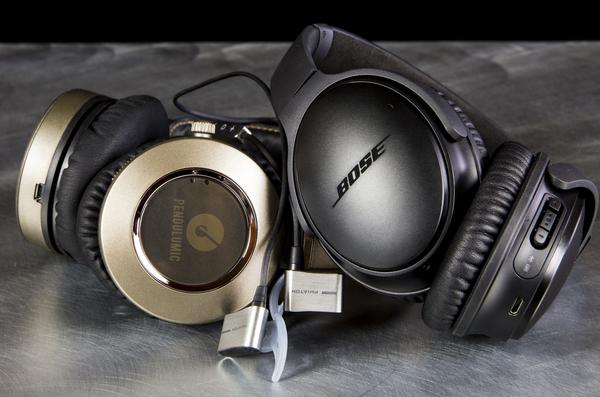The recent Apple iPhone 7 and the Moto Z Droid smartphones have removed the headphone jack from their devices.
Other manufacturers are likely to follow given the industry gold rush to make ever-slimmer phones impermeable by moisture and dust. The skinny Moto Z measures just over 5 mm thick, so shoehorning a 3.5 mm headphone jack in there is essentially a physical impossibility.
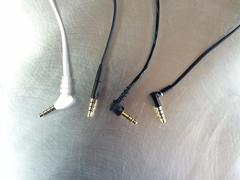 So what does that mean for the survival of portable wired headphones with the next generation of jack-less smartphones? Should we all throw our wired mobile headphones into the smoking trash heap of history? Who needs yesterday’s papers? As Jimi once pondered, is it tomorrow or just the end of time?
So what does that mean for the survival of portable wired headphones with the next generation of jack-less smartphones? Should we all throw our wired mobile headphones into the smoking trash heap of history? Who needs yesterday’s papers? As Jimi once pondered, is it tomorrow or just the end of time?
Well, not to get too psychedelic, but both and neither really. Love it or not so much, it’s just the next evolutionary step of the headphone business. Our guess is wired portable headphones will probably always exist in some form, but the herd will likely become thinner with fewer high quality portable wired headphones being released in the future.
APPLE LIGHTNING AND ANDROID-READY HEADPHONES
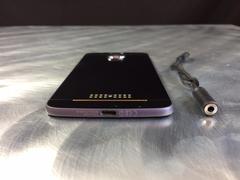 Although they’re in short supply today with just a handful of good models available, we suspect Apple Lightning plug and Android-compatible (USB-C) wired headphones will be increasingly common as the industry moves to satisfy expected demand from new Android and Apple smartphone owners.
Although they’re in short supply today with just a handful of good models available, we suspect Apple Lightning plug and Android-compatible (USB-C) wired headphones will be increasingly common as the industry moves to satisfy expected demand from new Android and Apple smartphone owners.
It’s also more than highly likely the push towards wireless headphones from tech giants like Apple and Motorola will speed up the development of improved wireless sound quality. At least we sure hope so.
But plainly the move away from analog headphone jacks in smartphones and other mobile devices means wireless is the wave of the future, especially in the world of portable and travel headphones.
THE BLUETOOTH DILEMMA
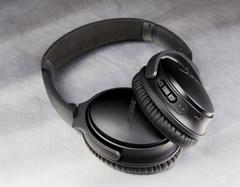 Of course, the pink elephant in the room is that Bluetooth and other wireless audio transmission schemes leave something to be desired in terms of the imaging depth, dynamic speed and detail resolution of the music for audiophiles. Not to mention the all-too frequent clicks and pops inherent with wireless connectivity.
Of course, the pink elephant in the room is that Bluetooth and other wireless audio transmission schemes leave something to be desired in terms of the imaging depth, dynamic speed and detail resolution of the music for audiophiles. Not to mention the all-too frequent clicks and pops inherent with wireless connectivity.
The advent of Bluetooth 4.0 (with 5.0 updates that will double the speed and quadruple data capacity reportedly around the corner) as well as improved AptX ‘lossless’ codec algorithms has enabled Bluetooth audio performance to steadily improve over the past several years, but it is still not truly comparable to wired headphones in overall sound quality. And as with previous iPhone iterations, the iPhone 7 does not support the AptX codec, leaving a sticky wicket for the wireless iPhone/iPad listener who will need to use Apple’s own lossy AAC Bluetooth codec.
HERE COMES THE DONGLE
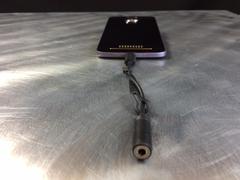 It turns out the knight in shining armor for the ‘classic’ wired headphone user is the unassuming USB-C -to- 3.5mm female plug adapters included with the Moto Z and iPhone 7. It’s a simple short dongle that connects wired headphones into the pin port of the phone. Of course it also eliminates the ability to listen to music and charge your device simultaneously. So its a terribly clumsy solution and just another blasted doohickey to lose or misplace, but at least there’s a usable option for your upscale cans.
It turns out the knight in shining armor for the ‘classic’ wired headphone user is the unassuming USB-C -to- 3.5mm female plug adapters included with the Moto Z and iPhone 7. It’s a simple short dongle that connects wired headphones into the pin port of the phone. Of course it also eliminates the ability to listen to music and charge your device simultaneously. So its a terribly clumsy solution and just another blasted doohickey to lose or misplace, but at least there’s a usable option for your upscale cans.
With perfect timing for this article, one of our Headphone.com reviewers recently purchased a Moto Z Droid smartphone after his old iPhone 5 suddenly got sluggish, then mysteriously crashed the day the iPhone 7 was announced. An emergency trip to the local phone store and a small fit of Apple pique found him going home with the wafer-thin and unabashedly cool-looking Moto Z. What’s the old saying, there are no coincidences in love and audio?
HEADPHONE JACK VERSUS DONGLE
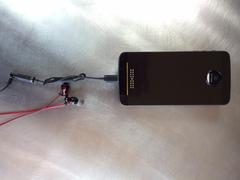 Using UE 11Pro in-ears as a wired headphone reference with the provided Moto Z dongle adapter, the sound became detectably more grainy at times with a hint of grit audible at the edges of the frequency range and a slightly more limited sense of dynamics. Listening to the same uncompressed [.WAV] file on the old iPhone 5 via the 3.5 mm headphone jack revealed more interior depth and smoother tonal edges to the musical presentation. The audio quality drop-off – while certainly troubling – was not completely as horrific as expected and was still rated as a better detailed and engaging sound than listening via wireless Bluetooth. I guess we can score one tiny little victory for the dongle.
Using UE 11Pro in-ears as a wired headphone reference with the provided Moto Z dongle adapter, the sound became detectably more grainy at times with a hint of grit audible at the edges of the frequency range and a slightly more limited sense of dynamics. Listening to the same uncompressed [.WAV] file on the old iPhone 5 via the 3.5 mm headphone jack revealed more interior depth and smoother tonal edges to the musical presentation. The audio quality drop-off – while certainly troubling – was not completely as horrific as expected and was still rated as a better detailed and engaging sound than listening via wireless Bluetooth. I guess we can score one tiny little victory for the dongle.
THE AUDEZE SINE / APPLE LIGHTNING AXIS OF DOMINATION
 We are pretty certain the folks at Audeze headphones have paid Apple spies on staff – the best choice currently found in wired Lightning-ready headphones comes from Audeze. The Audeze Sine on-ear portable headphone and their forthcoming iSine in-ear headphones are all outfitted with Lightning plug cables that can connect directly to the iPhone 7 and other Lightning-equipped iOS devices. The Sine/iSine Audeze models feature an integrated 24-bit DAC/amp built into their cords with a tone-shaping EQ app available via download.
We are pretty certain the folks at Audeze headphones have paid Apple spies on staff – the best choice currently found in wired Lightning-ready headphones comes from Audeze. The Audeze Sine on-ear portable headphone and their forthcoming iSine in-ear headphones are all outfitted with Lightning plug cables that can connect directly to the iPhone 7 and other Lightning-equipped iOS devices. The Sine/iSine Audeze models feature an integrated 24-bit DAC/amp built into their cords with a tone-shaping EQ app available via download.
So if you’re looking for iPhone 7 or Moto Z Droid ‘no-headphone-jack’ products, check our short list here for some current amps and accessories (in addition to the Audeze Sine/iSine headphones) that will allow you to use standard wired headphones with your sweet new Apple or Motorola device via plug adapters. There will undoubtedly be more stuff coming soon in this category!
And of course, if you have any questions, our Montana-based team of Headphone.com experts know all about this new stuff and how to use it. So feel free to give our friendly staff a call or shoot us an email. We would be pleased to help you navigate the uncertain headphone waters ahead.
